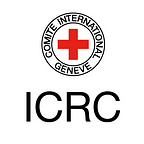For nearly 20 years, Spanish-American photojournalist Moises Saman has traveled the world documenting some of the worst that humanity has both endured and inflicted. From the conflict in Afghanistan to the earthquake in Haiti, Saman’s lens captures the humanity behind the headlines.
In February, he joined our team in Iraq and traveled through the Anbar and Salahaddin provinces. Among the places he visited was Lake Habbaniya — once a deluxe resort for well-heeled Iraqis on holiday, now a defacto squat with 4,000 families living in a crumbling six-story hotel. He also met people who had recently returned to their villages after having fled the violence, and saw first-hand what they found in its wake.
We sat down with Saman to hear his impressions about working in Iraq for over a decade, and what he witnessed during his last visit.
From when you first went to Iraq until now, how do you feel it has changed?
The first time I went to Iraq was in 2002. I was surprised how quiet Baghdad was; I remember taking taxis at 3 a.m. and not worrying about anything happening — a reflection of how tight the grip on security was at that time. But that idea, even for an Iraqi now, is impossible. Baghdad is quite a bustling city now though. There are traffic jams, there is activity. People go out, they go to work, they go to offices. Children play in the streets. There is life, but also death on a daily basis.
Life in the refugee camps is another story.
The lasting impression for me from Habbaniya is that once again it’s civilians that are bearing the brunt of this latest crisis.
“It’s sad to see that within a generation of a family there are people that have suffered during three different wars — and some of them have the scars to prove it — psychological marks inherent in someone that has grown up only knowing conflict.”
A lot of the people living in these displaced communities live in tents — without electricity or running water. They have to fetch water for their daily needs. They rely on assistance for most necessities.
But amidst this situation, people have become resourceful, resilient in many ways. It’s part of the human condition — you try to get on with your life as best you can. People still go to school. They don’t allow the situation to paralyze them.
Did you meet anyone that made a particular impression on you?
I remember meeting Sara. Her family had just moved back to their home, which was partially burned down during the conflict. The scene was beautiful: here was this young girl, sitting amongst such devastation, still pursuing her dreams of an education.
“She refused to give up when many others would. She still found a safe place for herself in her mind to do her homework.”
I admired her, but it made me wonder what would become her — of her life. I hope so much that she does well in school. But even more so, that the situation in her country will one day allow Sara to thrive.
I also visited Albu Ajeel village, on the outskirts of Tikrit. We had only recently arrived, like many other Iraqi’s — most of whom had come on foot.
A man came with a child in his arms. He didn’t know the boy, but he was holding him with care. Later we learned that the boy’s mother was killed after stepping on a mine while trying to escape an attack a few hours earlier. And the man had carried him to safety.
What’s the most overwhelming need that you’ve seen?
Everyone needs a sense of hope, they need to know that this situation is only temporary.
In my opinion, the Iraqi people have stopped believing that things will get better. And I understand why.
Thousands of families don’t know if their homes are still standing. Even if the war stops tomorrow, these families might have nothing to go back to.
There’s a sense of loss everywhere you go, and it becomes harder and harder to learn anything from it, other than to give these people a voice and continue to tell their stories.
I understand it’s just a drop in the bucket, what I’m doing. But for me, it’s important.
Moises Saman (b. 1974) is a member of Magnum Photos and is a regular contributor to The New Yorker Magazine, TIME Magazine, The New York Times Magazine, among other international publications. His new book, Discordia was published in 2016, which focuses on his work in the Middle East over the last five years.
